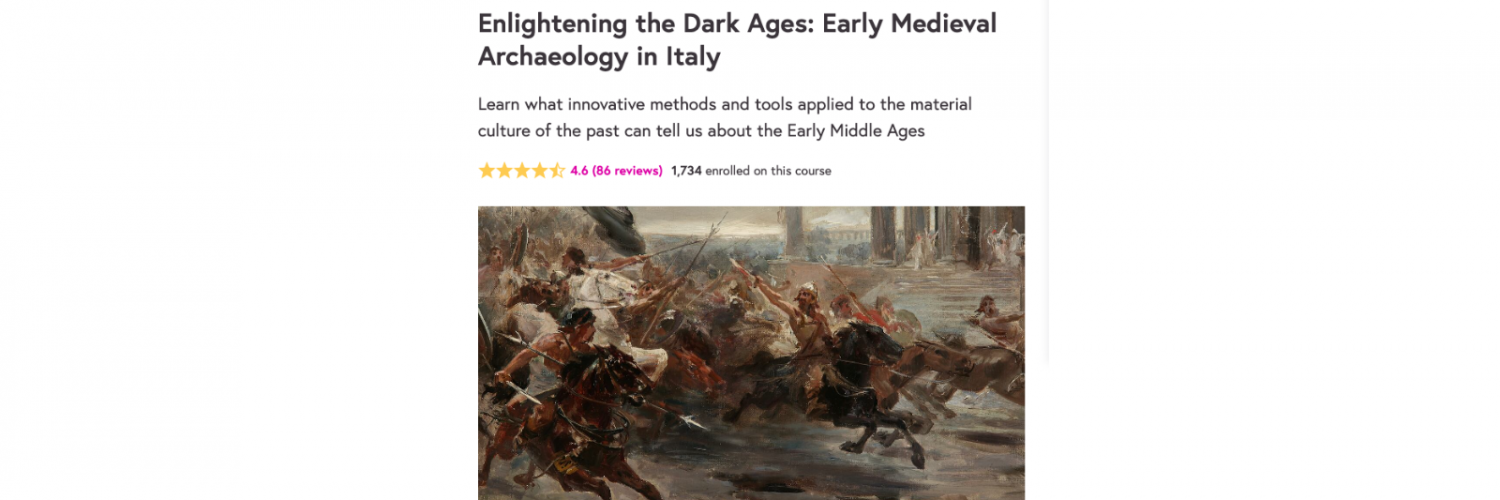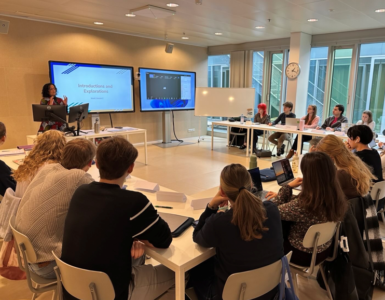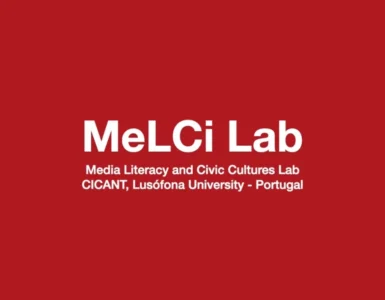by Marianne Grace Z. Araneta, Università degli Studi di Padova, Italy.
As educators and instructors, one of the many questions we often ask ourselves is how to make our students learn better. How can we create meaningful and effective learning experiences? Whether we’re teaching in a remote area to a small number of students or reaching out to a massive group by leveraging technology and new media, this is a question we must ask regardless of the context. And this question is something that guided our team throughout this project.
It began when Alexandra Chavarria, a professor of Medieval Archaeology at the University of Padova, thought of developing a massive open online course with the help of our team at the Digital Learning and Multimedia Office. She hoped to create a course that could serve both as learning material for her university classes and also as a means to extend beyond the four walls of our university, reaching a greater number of learners. More learning for more people. So the course isn’t just a university lesson and neither is it simply a standalone MOOC—it’s a union of both, opening up to university students as well as others outside the academe and evoking principles of reuse when it comes to digital assets.
But let’s go back to the original question: how can we create meaningful and effective learning experiences? For this project in particular, how can we do that online? In the development of this course, we made sure that the learning experience had three important aspects: authenticity, transfer, and community.
We ensured its authenticity by bringing forth the expertise of researchers and practitioners and unpacking complexity in a way that could be understood by eager novices. We also made sure that it promoted transfer of skills, so reading from a page or watching a video can automatically be translated to a real-world experience or can deepen understanding of an existing phenomenon. Finally, the learning experience had to be social, where knowledge is shared, exchanged, negotiated with a community. So learners aren’t just passive viewers but active participants, and this entailed encouraging dialogue through the steps of the course and producing multimedia content that could spark curiosity and compel discussion. We incorporated videos, podcasts, articles, photos, padlet walls—putting the multi in multimedia. So again, authenticity, transfer, and community.
A great advantage was that the material itself was both rich and relevant—sure it’s about archaeology and history. However, while the content deals with the study of the past, connections to present phenomena such as climate change, mass migrations, and even pandemics and questions regarding its future implications were constantly posed. So as an instructional designer, it was relatively easy and actually quite invigorating to translate this course in a meaningful way online, as the content given to our team was already teeming with meaning. It was just a matter of revealing what was already relevant.
And it paid off. Since the course launched last year, we have had about a thousand five hundred learners and counting, and a number of extremely active ones—thanks to the patient and dedicated moderation of the professor who set a period of active feedback-giving. When the course first launched, we saw a lively exchange among the participants, most of whom, much to our surprise, were a retired yet eager community of students. In fact, their eagerness inspired the team to set up two follow-up webinars—something which was not originally planned but which came about due to feedback from students who had lingering questions. It was refreshing and endearing to see such a vibrant community of adult learners who were so invested in their learning.
Aside from that, there have been extensive conversations on pressing societal issues, fostered by the study of the past. This shows how the content allowed people to make these critical connections and hopefully think more deeply about the effects of our present actions on the future. From a logistical perspective and one of reuse, we have well-made material that can be used in different contexts.
So if I go back to our core question: How can we create meaningful and effective online learning experiences? I think this project helped us realize how in a way.
It definitely allowed us to rethink the scope of university teaching and see how meaningful and effective learning experiences shouldn’t be limited just to those who have the opportunity to study in our university but should extend to others, young or old. It also illustrates the potential of building online learning communities—and while face to face is always better, we shouldn’t disregard the possibility of creating virtual learning spaces. And lastly, this project is an example on how collaboration between educators and instructional designers is crucial in creating meaningful multimedia learning.
Editor’s note: MOOC: Enlightening the Dark Ages: Early Medieval Archaeology in Italy was a well-deserved finalist in the 2022 edition of the MEDEA Awards and represented at the Awards ceremony in Leuven by Marianne Grace Z. Araneta, Università degli Studi di Padova, Italy.

Author
Marianne Grace Z. Araneta, Ufficio Digital Learning e Multimedia, Università degli Studi di Padova, Italy














